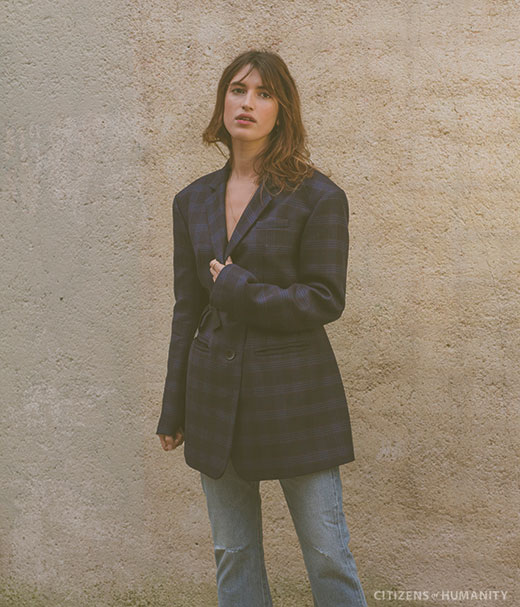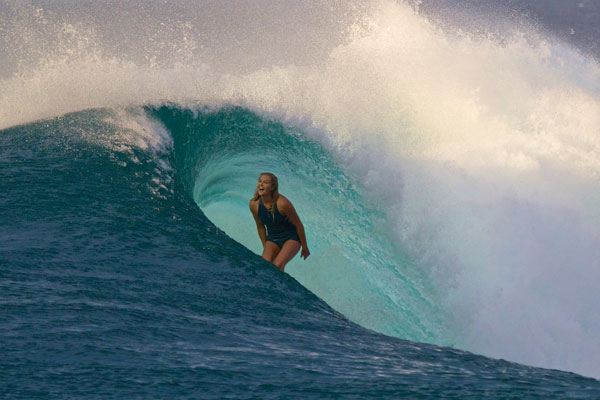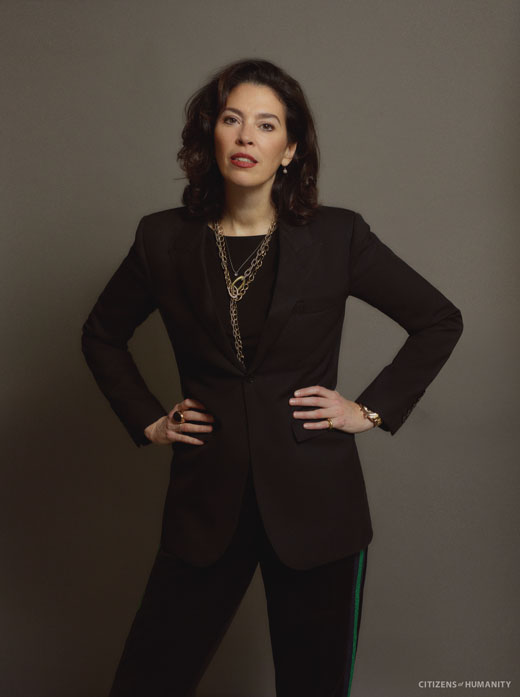It may come as a surprise that Elisabeth Holder Raberin, the visionary behind the stateside expansion of French luxury confectioner Ladurée and its whimsical, rainbow-hued macarons, never envisioned herself working in the culinary world.
“The food business is really more male dominated,” explains Holder Raberin, co-president of Ladurée USA. “I think women give meals to their family every day, so in a way it’s ironic to have an industry that’s really masculine,” she says, recalling childhood memories spent with her grandmother at the bakery, filled with the scents of freshly baked goods. (“She knew every client by name and nobody could leave the store without a pastry or bread,” she says.)
It’s something she has witnessed since childhood, watching her parents, Francis and Francoise Holder, oversee Paul (her grandparents’ family bakery turned artisanal chain), in their hometown of Lille, France, and later with the family’s acquisition of Ladurée. Holder Raberin, the only girl and youngest of three (her eldest brother, David, is currently the chairman of Ladurée; Maxime oversees Paul International), was initially drawn to a career in fashion, working for the likes of Ralph Lauren, Et Vous and Hermès in their European and American markets—an experience, she says, that ultimately prepared her to step into her present-day universe of a luxury lifestyle brand inspired by pastries.
“Hermès has so many things in common with Ladurée because it’s a family business and the know-how is amazing,” says Holder Raberin, a graduate of the European Business School in Paris. “The clients are very specific and every client is unique. They want an experience when they go to Hermès and I think it’s the same thing at Ladurée. You’re not only buying a gown, you’re also experiencing the lifestyle.”
When Holder Raberin decided to join the family business in 2004 (“I think I got more mature and I wanted to work with my dad—I didn’t want to lose the opportunity for him to educate me,” she says), her father made her start from scratch, working her way up the ranks from a salesperson to overseeing Ladurée’s North American partnerships, development and operations with her husband, Pierre-Antoine Raberin. Together the couple resides in New York with their 9-year-old twin sons.
The family has settled into their way of life in America, which includes frequent trips to museums and traveling on weekends. But Ladurée’s French heritage remains at the heart of Holder Raberin’s work as she opens tearooms and restaurants around the country, including Miami, Los Angeles and Washington, D.C. The most important aspect, she says, is the knowledge and training of their chefs, followed by the signature ornate, color-splashed décor for which the brand’s locations around the world are known. “My father is an art collector, so he has a huge storage,” she says. “I love to put a few pieces in each store to bring a family feel.”
Holder Raberin was 15 when her family acquired Ladurée in 1993. At the time it was a singular, ornate tearoom and pastry shop (dating back to 1862) where the Holders would gather as a family on Saturdays while her brother was studying in Paris. She remembers it for the confections but also for the “best omelet ever,” plus delectable finger sandwiches and vol-au-vent. “It was like a small jewel, a rough jewel,” says Holder Raberin. “Because [my father] is an entrepreneur, he knew that buying Ladurée, he could [create] something, a beautiful brand, a worldwide brand.”
The macaron—a creamy ganache sandwiched between two almond-flour shells—was always the star of the show at Ladurée. But what started out as four flavors has evolved into an array of riffs on the signature dessert—orange blossom, caramel and blackcurrant violet among them, with the introduction of new flavors each season.
“It’s the supermodel of the pastry world. It’s very photogenic,” says Holder Raberin of the confection, which not only inspired candle and home fragrances but also led to collaborations with everyone from photographer Gray Malin to fashion houses including Lanvin. Recently, Vera Wang dreamed up an all-white coconut crème chantilly macaron and a mango-and-coconut wedding cake, inspired by her own bridal designs.
The ideal macaron, according to Holder Raberin, is “a very good balance between crunchy on the outside and soft on the inside,” and not too sweet, she says. For that, she turns to chef Claire Heitzler, head of patisserie, who has been tasked with bringing that perfection to every macaron bite (not to mention other sweets, including lemon-meringue tarts, vanilla flans and chocolate eclairs) while expanding the repertoire of flavors with new collections every three months.
What about her own challenges as a female in the workplace? “It’s more in my family,” she says with a laugh. “In my business I have to fight because I am younger and the only girl. Sometimes I have to remind them I’m not a 15-year-old.”
—





